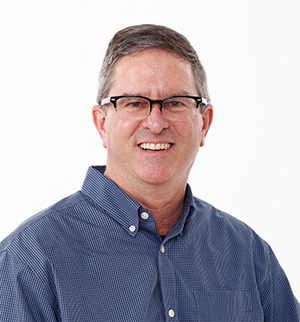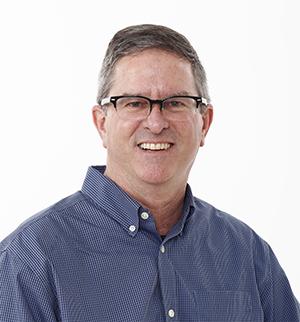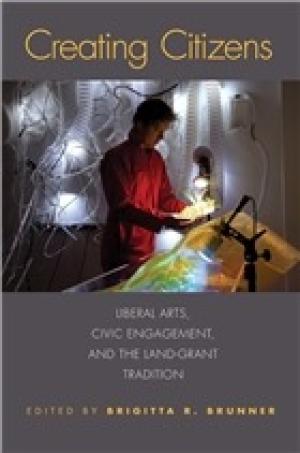Resources by Jeffrey M. Brackett

I hinted in my previous post that maybe I should do an illustrated version of my in-process book, Zen and the Artful Buddhist: Asperger’s, Art, and Academia. I have illustrated a few pages, but it’s taking far longer than I imagined it would. This book idea has been percolating for a few years. Some days I want it to be published by an academic press, but now that it’s morphed into an illustrated book, I’m not so sure about an academic press. The book meanders. As does my mind. All the time. Illustrating the book feels right: it’s creative, innovative, and will illustrate (literally) my evolving understanding of how I’ve been impacted by learning late in life that I have Asperger Syndrome (now, a part of ASD, Autism Spectrum Disorder). One need not have Asperger’s to reflect on one’s life, to be sure. Yet this is the lens through which I see more clearly my years as a professor.Before starting to illustrate the book, I was working on and off on another large (31x51 inches) painting. I only work on the painting an hour or so at a time, since it requires intense concentration and it is physically demanding. It requires standing, and the more I paint, the further I have to reach to complete rows higher on the paper, creating strain on my back, eyes, and wrist, to name a few. This current painting is precisely what I have been working on at various points for the past several years, namely short, parallel lines in multiple rows. While working on the piece, I thought a lot about my teaching style.So far, my illustrated book project shows various connections between my art, Asperger’s, Buddhism, and academia – all large topics themselves. I’m not an expert on Asperger’s, but what I’ve learned provides insight into my art-making. And insofar as any artwork contains the “fingerprints” of the artist, my pattern-heavy, highly-repetitive paintings also connect to themes I recognize in how I taught my courses. Of course, I could add much more nuance, but here is a short list of Asperger-related traits that run through my art and teaching:Detail: I always thought it was normal to focus on details, but I see now that I was having students look at the trees so much that we sometimes would miss the forest;Precision: accurate pronunciation of foreign terms (e.g., Sanskrit);Repetition: similar assignments, just different material;Nuance: overall picture shows nuances, but one still needs to look intently at the details first;Plans: agonizing over planning the syllabus every semester.My latest large painting contains roughly thirty-one thousand parallel lines, each one fitted within a half inch band of parallel lines. Like my teaching, it contains lots of details, all of which are necessary for building the overall painting. Looking back on my teaching, I now wonder what sort of balance I struck between looking at the individual lines/trees and making clear the connections that were being constructed throughout the course/forest. While illustrating my book project, I see similar challenges emerging. My next (illustrated) post will delve into more nuances about my progress.

For two years I planned my full-year sabbatical, something colleagues said would be a life-changing experience. My sabbatical days were filled with research and art-making. By spring, making art nudged research out of the picture. I was transitioning from an art hobbyist to an art professional. The thought of spending my days teaching made me physically ill, despite the fact that I had poured much of my time into continually improving my pedagogy. This change of attitude was not due to boredom, burnout, or frustration over university politics. I was an artist, full stop, so that’s how I chose to live. Two years later, I took an early retirement package. I have wanted to write a book about these developments, something I might title Zen and the Artful Buddhist: Asperger’s, Art, and Academia. But I don’t have the time, energy, or inclination to write a book. However, creating an illustrated version does appeal to me, and I’ll say more about that in another post. I’m more realistic, and more selective about how I use my time now that I’m retired. A friend commented last week, “I’m not surprised that you have found new things to keep yourself busy.” My days are now spent in my art studio or at my part-time job at a local art gallery and framing shop. Down the hall is my former colleague, who, during a sabbatical, said to herself “I’m done with teaching.” She was my department chair for ten years, and she is my best (artist) friend. We regularly critique each other’s work and go for beer at 3:30 (aka “beer:30”) in the afternoon because we can. Plus, the pub is on the ground floor, two doors down. She moved out-of-state two weeks ago, and there’s now a feeling of loss each time I enter my studio. I’ve started painting a lot of intricate, repetitive patterns lately, something I was doing regularly a few years ago. People often comment that my art and art-making processes must be spiritual and/or meditative. With my pattern-heavy art, I can see what they mean, but I still refuse to use the word “spiritual” in general or in reference to my artwork. Something about the repetition of patterns calls for deep concentration. It’s also very soothing, calming any Asperger Syndrome-related anxiety. I often tune out my surroundings by putting in my earbuds and listening to my “liked songs” playlist. My music is not soothing to most people, but repetitive sounds soothe many folks with Asperger’s. My days are spent either working in a place that is part of the art community, or in my studio making art. As one of my art mentors used to say in figure drawing class — I took a few summer courses — “This is the hardest thing you are going to do today.” Art making is hard work. It calls for constant decisions, corrections, redirections, planning, and more. And then there are all the questions about why you made those choices. It never ends. And I’ve said nothing about all the other aspects of being an artist, like marketing your work, and so on. I suppose I will say more about living as a full-time artist in another post.

How fitting it is that as I began the final edits on this post, I ended up clenching my jaw, tensing my shoulders, and generally doing just the opposite of what I’m trying to say in this piece. My goal is to bring the benefits of self-care into the classroom. Self-care are two words I don’t use. But, fifteen years ago a Wabash Center mentor said, “You are really good at self-care.” My modes of self-care have morphed over the years, and now the main one is my visual art practice. What I am considering now are ways to facilitate artistic self-care among students. What might it look like to create space in classrooms for students to make art as a way of learning religious studies? How might students not only learn religious studies, but have the learning experience mimic the calm, creative moments of making art? I’m not saying that art is just about feeling good; no, it’s hard work, but a very different type of work than writing papers. I didn’t grow up drawing a lot, but I majored in art, sort of, and then dropped it after a year. The last two summers, I focused intensively on developing my art practice. Rather than thinking, “I really should be doing something else with my time,” I thought about how my linework asked questions; how the calming effects of artistic processes opened space to imagine my art as doing research. Of course, there would be a written element, but the art itself became the primary source for the writing. I was also preparing for my first solo gallery show, which was on hold for more than a year due to COVID-19. My research/artmaking for the show began with the question, “What would it be like to draw as a Buddhist?” Obviously, that question simply leads to innumerable other questions, but that’s part of the point: the merging of drawing and doing research. During my artist talk, I was describing the central piece—a five-by-ten foot vertical triptych—when I spontaneously blurted out, “This is not a hobby. This is who I am at the core of my being.” My next thought was, “Whoa. Where did that come from?” That moment solidified my resolve to facilitate similar experiences in the religious studies classroom. Yes, I’m dreaming a bit here, but it’s a dream I’m actively pursuing. I named the triptych, “Forgetting the Ox,” which is the seventh of ten stages on the path toward enlightenment, according to the Ten Ox-herding Pictures commonly used in Zen. My drawing illustrates—rather loosely—some parallels between my becoming an artist and the struggles of the ox-herder in locating his “true nature.” It didn’t take long for me to imagine an entire course designed around art-making as doing religious studies. I already regularly have students draw their metaphor of being a college student, their religious or moral autobiography as a one-page, six-panel comic, or an image of the Buddha without looking at reference material. These exercises feel like “easy days” from a student’s perspective. Honestly, sometimes these exercises feel like I’m not really teaching. But there is plenty of learning taking place: students relax, laugh, tell stories about their religious upbringing, and gain confidence in sharing more of themselves as they describe their drawing to their classmates. The metaphor drawing, in particular, leads to students taking risks and becoming vulnerable; for many this is their first time drawing anything in years. Class becomes self-care, if only for a short time. So why not build upon those experiences to learn course material, moving well beyond personal metaphors? What if, for instance, in order to learn about Buddhism, students were to create a series of images of the Buddha? In the process, they would make new connections to the course, and likely retain information far longer than normal. Plus, they would add the somatic/artistic element. I’m not ready to forgo writing assignments, but the writing would now incorporate a discussion of their artwork and how it integrated with their research. My own metaphor as a professor is radically different from the one I drew many years ago in a Wabash Center pre-tenure workshop. At the time, my drawing depicted a long winding path filled with obstacles. Today, I would draw a group of students on winding paths, with me off to the side, in awe of their creativity, ready to help them figure out their paths for themselves. The new metaphor is less about me, and more about empowering students as they create their own journey of self-discovery.

Using examples of community and civic engagement (CCE) at Auburn University, this collection of essays provides readers with a lens through which to view a number of debates in higher education. In the broadest sense, the essays address the question of the role of higher education. More narrowly, they ask questions such as, how do universities respond to increasing public pressure to demonstrate clear connections between education and job placement? Since the volume focuses on civic engagement, authors ask what the ideal relationship between a university and its surrounding community might be. How, for example, does a public university foster such relationships, of what sort, and to what end? With increasing pressure on students to graduate in four years, along with widespread perceptions of higher education as a form of job-specific training, it may seem rather bold for educators to promote a liberal arts education. However, Brunner argues that one can address these questions by looking to the ancient Greek and Roman liberal arts models, which “foster personal growth and civic participation” (1). Through diverse case studies, the authors illustrate the high impact learning experiences that occur in CCE situations. For example, students in political science who do internships have a higher degree of satisfaction with the course, learn nuances about relationships between theory and problem-solving in a community, and often reconsider their career choices. This reconsideration results, in part, from the reflective component of CCE, which helps students make connections between classroom learning and their internships via writing assignments. These connections further illustrate the critical thinking (among other skills) that liberal arts education fosters – skills which align with employers’ desires in hiring. While much of Creating Citizens focuses on teaching and student-learning outcomes, Brunner also addresses the contentious issue of how promotion and tenure committees are to evaluate the work of engaged scholarship. How, for instance, does engaged scholarship measure up to traditional peer-reviewed scholarship? Again, this is not a new question, but one that nevertheless impacts pre-tenured faculty decisions for research plans. Brunner notes that engaged scholarship combines teaching and service, is as rigorous as other peer-reviewed scholarship, and upholds university missions and values by engaging faculty in mutually-beneficial, community-based problem-solving. In short, students, faculty, the university, and the community all benefit from CCE. Readers may wonder how the final essay fits within this volume; though interesting as a reflection on the role of non-native activist anthropologists working in India, the connection to the thematic foci of the other essays is tenuous. Overall, however, this volume would be of interest to educators looking for practical models of CCE that can be adapted to fit one’s own institutional location, mission, values, and vision for community relations. Land-grant institutions such as Auburn explicitly aim to promote application of research, in this case through CCE, a model that any institution of higher education would do well to consider adopting.